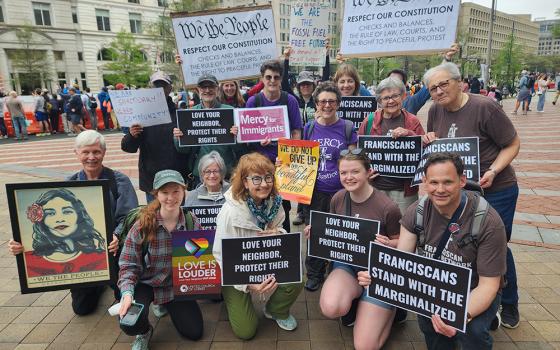This week, Q & A is looking at the Shirley Sherrod episode. Yesterday, NPR's Michel Martin had some very smart observations and today, Sister Mary Ann Walsh, director of Media Relations at the USCCB offers some more smart commentary.
The question: What does the Shirley Sherrod episode tell us about race and politics and the media in the age of Obama?
Sister Mary Ann Walsh:
The tale of Shirley Sherrod, the Agriculture Department leader dumped when a fringe group cooked up a story backed by an out-of-context video clip to accuse her of racism is a cautionary tale for the church. For sure, pseudo-journalistic efforts that set out to destroy reputations are not limited to politics, and damning words include more than the epithet “racist.”
Apologies from President Obama to the president of the NAACP, which too quickly jumped on the get-Sherrod bandwagon, abound. But a stellar career is smeared because of reckless accusations and shoot-from-the-hip responses from leaders you’d think would know better. Such yellow journalism is not new to the United States. Biased reporting raged in the late 19th century, when the New York newspaper war between Hearst and Pulitzer introduced yellow journalism into our vocabulary. Even before that, in the early 1800s, scoundrels used media to spread anti-Catholic diatribes via tracts such as the false and scurrilous tales of Maria Monk.
In recent days, new journalistic hit squads have emerged on the U.S. scene, even in the church. Where once only a few church newspapers engaged in character assassination, today these attacks seem ubiquitous. Part of the problem may be the editorless Web, where passionate self-righteousness, minus basic journalistic fairness, runs amok.
Perhaps the anonymity that characterizes much of Web interaction makes such assaults too easy. Talk radio that focuses on the heat of verbal sparring rather than the light of rational thought also abets media crimes. Character assassination is especially offensive when pursued under the guise of fidelity to the Church.
Journalistic travesty includes more than anonymous attacks. In June, a news agency pursued its agenda by inventing quotes and ascribing them to Cardinal Francis George. When first called on it, the agency defended the story. When top editors realized they’d done wrong, they still did not issue a public correction or apology.
Many such groups claim the word “orthodox” for themselves. They dismiss those who do not agree with them or their approach as “unorthodox.” People of a different opinion or approach are accused of setting up a “parallel magesterium.” These are serious condemnations in a church which holds fidelity to its teachings as paramount. Despite the fact that theology and canon law are matters of careful analyses, these groups bring the subtlety of a meat cleaver to church discussions. In what is not unrelated, many of these groups use such attacks as part of their fundraising apparatus.
Kudos to those in the NAACP for recognizing when they’ve been “snookered,” as the organization said, and to Department of Agriculture for admitting it acted sans facts. Their actions are commendable and their situation offers a lesson for all: Truth is the primary casualty in a culture war - and it’s true both inside and outside the church.
Tomorrow's Interviewee: Professor Matthew Green from Catholic University's Institute for Policy research and Catholic Studies.




